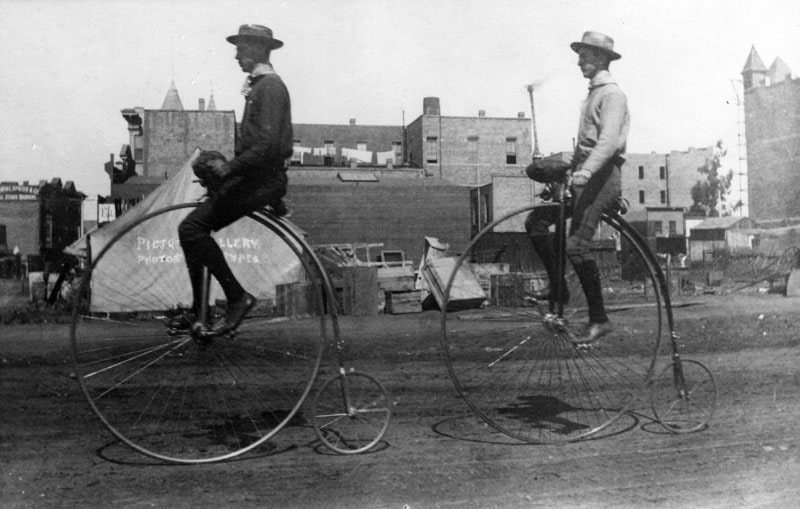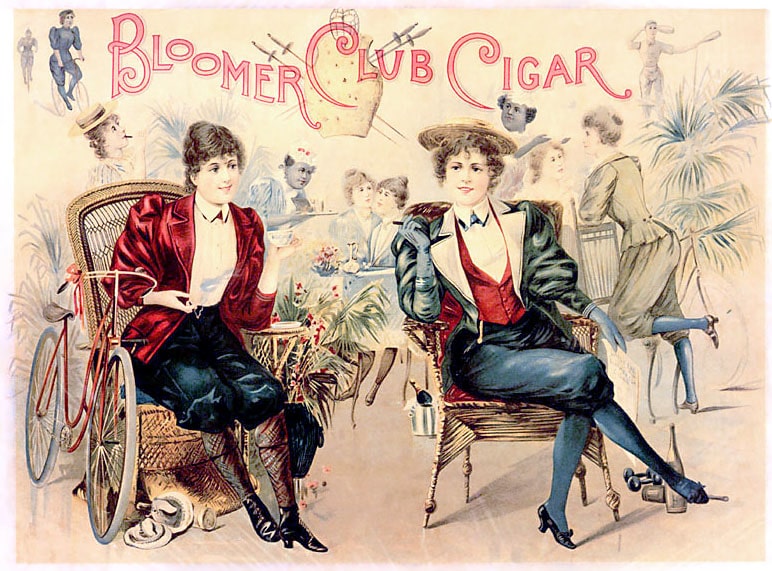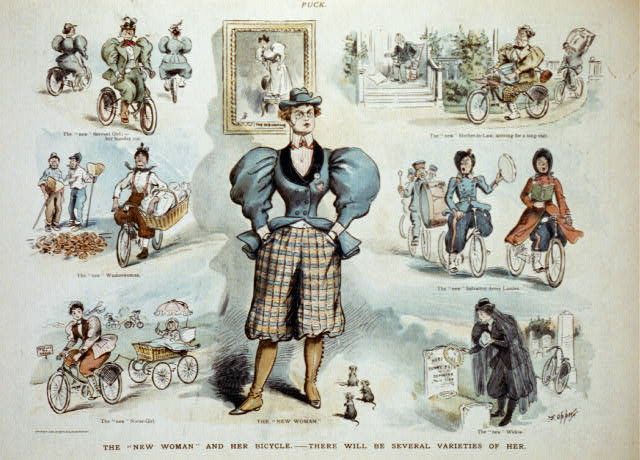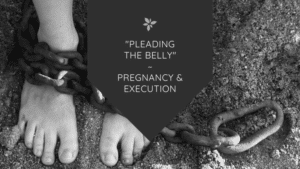In the late Victorian era, the popularity of bicycling was at an all-time high. New bicycle designs were safer, more comfortable, and cheaper than ever. So it’s no surprise that more and more men and women were taking up the sport, and the New Woman and her bicycle became a 19th century phenomenon.
What IS surprising about the bicycle craze of the 1890s is the big effect it had on the women’s liberation movement. Cycling opened up a new world of freedom for upper- and middle-class women, who had been mainly confined to staying at home. The so-called New Woman and her bicycle, a strong and independent woman who rode bicycles and wore cycling costumes like bloomers, became a symbol of gender equality and redefined femininity going into the 20th century.
The Role of Women in the Victorian Era
In the 19th century, society held a view of separate spheres for men and women. Based on their biological and “God-given nature,” women were thought to belong in the private sphere of housekeeping, child-rearing, and domesticity, while men belonged to the public sphere which included politics, law, and commerce.
The ideal of the “true woman” in the Victorian era was pious, pure, submissive, and domestic. She would not aspire to leave the home for work or pleasure. For middle- and upper-class women, homemaker was the only role society allotted to them.
This is what historians call the Cult of Domesticity.
With this attitude, combined with the ultra-modest dress at the time, you can see how an upper-class woman riding around on a bicycle would be considered scandalous!
The Bike Boom of the 1890s
Various forms of the bicycle were invented throughout the 19th century, but most of these were dangerous to ride and considered more of a novelty than a method of transportation. The riders of these expensive early bicycles were mostly rich young men. The high-wheel bicycles of the early 19th century, called penny-farthings, were thought to be inappropriate for ladies.

The 1880s brought the invention of the safety bicycle, which exploded in popularity.
This new design used a chain drive like modern bikes, and allowed the rider to sit much closer to the ground so that it was easier to stop. Through this decade and the next, mass production and competition brought lower prices. A quality bicycle could be bought for less than $100 (about six months’ salary), and the bicycle’s popularity soared.

By 1890, the Cyclists’ Touring Club in Britain had 60,000 members, 20,000 of which were women.
History of Women’s Cycling in the 19th Century
The new safety bicycle brought women unprecedented freedom and independence. Women who had been practically confined to their homes could now easily go anywhere they wanted, anytime, without having to be dependent on men.
Women such as the suffragist Amelia Bloomer had been trying since the 1850s to promote dress reform for women, but hadn’t been able to stand against the demands of fashion.
But now that bicycles were so popular, women were turning to more practical dress. The restrictive corsets and heavy, layered skirts that were necessary fashions at the time made it almost impossible to ride a bicycle.
Women finally started wearing bloomers, shorter dresses, and looser or no corsets.

Resistance to the New Woman and her Bicycle
Women on bicycles were highly visible as they rode around outside, and began to serve as a symbol for freedom and independence for all women. Though most of these women cyclists probably didn’t have women’s liberation on their minds, their activity was still considered by many to be a challenge to the social order.
In the 1880s and 90s, the New Woman and her bicycle became a common subject of satire and caricature. Critics thought they were tearing apart society by abandoning their household, husbands, and children. It was suggested that women who wore bloomers and rode bikes were loose women, prostitutes, or lesbians.

Doctors warned women that bicycling was bad for their health: that women were too fragile and sensitive for the exertion of bike riding, and that habitual bike riding could damage internal organs and lead to infertility or even death. Members of the clergy preached against women riding bicycles, and called bloomers “outrageous” and an “abomination”.
Still, the bicycle craze continued until the rise of cars in the early 20th century, when their popularity steadily declined. The effects of women’s new-found freedom and practical dress reform redefined femininity for a generation, and spurred the growth of the feminist movement.
Here’s another strange connection with suffrage and women’s rights in the 19th century: the temperance movement.
Next, check out Women’s Suffrage and Prohibition: Strange Allies and find out how and why suffragists worked for prohibition.
Keri is a blogger and digital marketing professional who founded Amazing Women In History in 2011.






Hello, Keri Engel
I love to read your article about New Woman & Her Bicycle. I would like to say that your every thought about our women what you have shared is very much able to applauded and eulogy.
I have younger sisters also they are much passionate about Bicycling. I must share your thought with them. keep sharing like this encouraging thought
Thank you!
Mike Bhand
This is one of the best article for all readers, especially for all those who like really like to learn how to ride a cycle. This is one of the special article for all women.